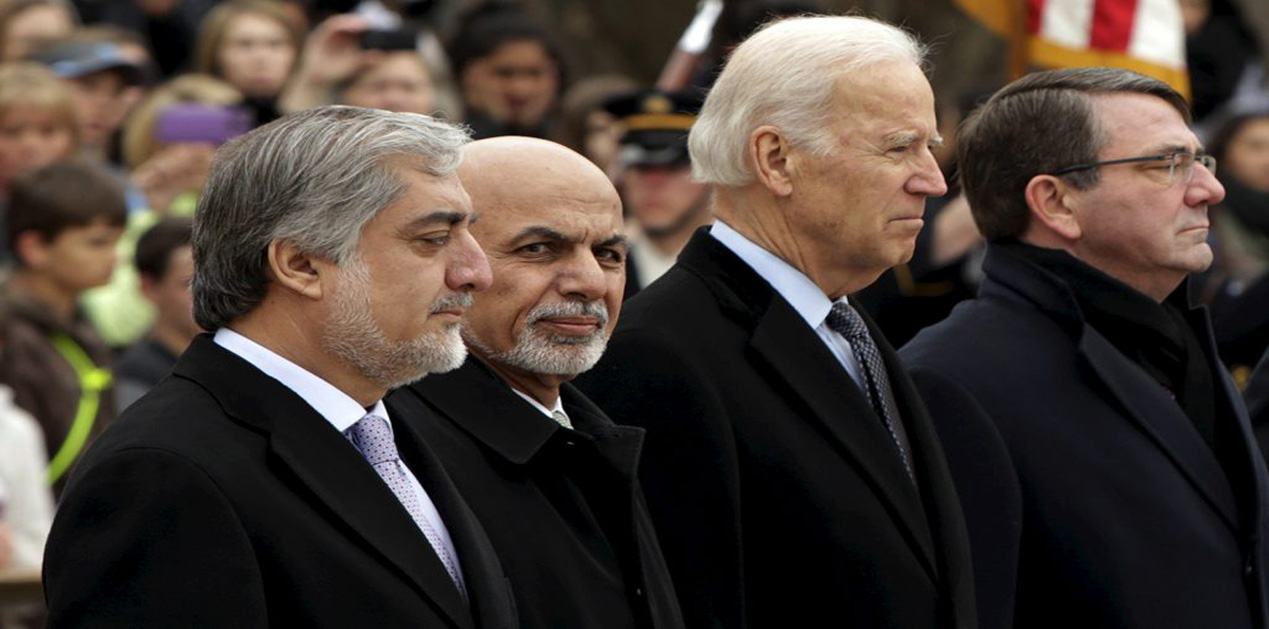After a violence-ridden 2020 amid the COVID-19 pandemic, Afghanistan is looking ahead at a more turbulent new year as the United States plans for a full troop withdrawal from the country by May 2021. The intra-Afghan dialogue that began in Doha in September 2020 opened a narrow window of opportunity to achieve sustainable peace. However, after four months of negotiations, the Afghan government's negotiating team and the Taliban have only worked out the disagreements on the talks' procedural rules. The negotiating parties also outlined initial topics of discussion and formed a working committee to discuss the agenda. The substantive matters such as a ceasefire, nature of government, Constitution, Defence, women rights, minority rights are most likely to be discussed in the second phase of the talks when the intra-Afghan dialogue resumes on January 5th after 22-day recess period.
The slow pace of the intra-Afghan dialogue and initial disagreements over procedural rules suggests that the future of peace talks is fraught with problems. For over four months, the Taliban had stalled the process by adopting a non-compromising attitude on its demands on technical issues, including on which school of Islamic jurisprudence should be used to resolve disputes. Although the peace process in the conflict zones is expected to be a long and cumbersome process, there is a slim prospect of a political settlement in Afghanistan. The widening trust deficit due to increasing violence, lack of compromise, and the Taliban's maximalist position would be the death knell to the peace process.
The ongoing violence in the country has dimmed the initial hopes raised by the inauguration of intra-Afghan dialogue. The violence had increased significantly after February 2020 when the US signed a withdrawal deal with the Taliban. By intensifying violence and capturing territory on the battlefield, the Taliban aims to gain leverage in the peace talks. The US and the Taliban have also exchanged a few barbs over the increasing level of violence by the insurgent and subsequent US airstrikes supporting the Afghan security forces. After an attack on a maternity ward and a funeral ceremony in May 2020 that killed over 40 people, US Special Envoy Zalmay Khalilzad stated that the Taliban “are in violation of the spirit [of the US-Taliban deal] given the number of attacks and the Afghan casualties in those attacks.”1 The Taliban have also blamed the US for violating the Doha agreement by launching airstrikes against their ground offensives in Helmand, Farah and other provinces.2 In response, the US officials rejected the Taliban accusation and clarified that the airstrikes “have been and continue to be solely in defence of the ANDSF as the Taliban are attacking them.”3
The Taliban’s ‘fight and talk’ strategy isbolstered by the US's commitments in the Doha deal to withdraw from the country by May 2021 completely. As the withdrawal timeline comes nearer, the Taliban will intensify targeted attacks, suicide bombings, and ground offensives in 2021 to strengthen its hold on power and further lower the Afghan government's and security forces’ morale. President Trump’s decision in November 2020 to reduce the level of American forces in Afghanistan from 5,000 to 2,500 by mid-January will further embolden the Taliban. The troop reduction at such a rapid pace when there is no real breakthrough in the peace process will weaken the Afghan security forces, already heavily dependent on the US air support and intelligence to thwart the Taliban offensives. As compared to the Taliban, the Afghan Republic has joined the negotiations in a relatively weak position. With internal fissures running high amidst the uncertain US support, the Kabul government must maintain a militarily advantageous position to push the Taliban for a compromise at the negotiating table.
The Taliban has maintained a surprisingly high level of violence during winter months, including suicide bombings, targeted assassinations, and attacks against military assets and security checkpoints. Given the current pattern in the ongoing violence, the forthcoming spring months will be particularly challenging for the Afghan security forces. With the US troops level going down to 2,500 in January 2021, there is a high possibility that the Taliban will launch “massive coordinated attacks against the vulnerable provincial capitals” during the spring season.4 Therefore, to deny the Taliban from assuming an advantageous position in the battlefield and negotiating table, the US must adopt a more robust and zero-tolerance policy vis-à-vis the Taliban-initiated violence and attacks against the Afghan forces.
Given the US's bipartisan consensus regarding the withdrawal of American troops from Afghanistan, President Joe Biden’s policy would have less space for innovative manoeuvres. In all likelihood, President Biden will stick through the Doha agreement signed between the US and the Taliban. President Biden is known to view the war in Afghanistan through counterterrorism lens rather than a state-building project. The rising concerns regarding the Taliban’s and specifically the Haqqani Network’s close linkages with Al Qaida and other terrorist groups might push President Biden to adopt a stricter approach and delay the full military withdrawal. In case, the Taliban is unable to address the concerns raised by the US administration vis-à-vis its linkages with the terrorist groups; President Biden might relook at the option of leaving a counterterrorism force behind. However, in Doha agreement, the Taliban has ensured a full military withdrawal by the US.
The Doha agreement will fall apart in case the Biden administration insists on leaving behind a counterterrorism force. On the other hand, without leaving the counterterrorism force and air power behind, the US will be signing a death warrant of its principal ally in counterterrorism, i.e. the Afghan government. Here, the critical question is how the Biden administration would negotiate with the Taliban the idea of leaving behind a counterterrorism force without derailing the ongoing peace process. The future might hold the key for Afghan conundrum, but at present, it looks uncertain.
Endnotes
- Nick Wadhams, Taliban Violating Spirit of Peace Deal With U.S., Envoy Says, Bloomberg, 15 May 2020, https://www.bloomberg.com/news/articles/2020-05-15/taliban-violating-spirit-of-peace-deal-with-u-s-envoy-says
- Catherine Putz, Agree to Disagree? US, Taliban Trade Barbs Over Continuing Violence, The Diplomat, 20 October 2020, https://thediplomat.com/2020/10/agree-to-disagree-us-taliban-trade-barbs-over-continuing-violence/
- Ibid
- FrudBezhan, No U.S. Troops? Taliban in Gov't? Peace? What Lies Ahead For Afghanistan In 2021, Radio Free Afghanistan, 26 December 2020, https://gandhara.rferl.org/a/taliban-afghan-peace-biden-afghanistan/31020136.html#:~:text=The%20war%20in%20Afghanistan%20%2D%2D,ending%20the%2019%2Dyear%20war.
(The paper is the author’s individual scholastic articulation. The author certifies that the article/paper is original in content, unpublished and it has not been submitted for publication/web upload elsewhere, and that the facts and figures quoted are duly referenced, as needed, and are believed to be correct). (The paper does not necessarily represent the organisational stance... More >>
Image Source: https://www.atlanticcouncil.org/wp-content/uploads/2020/11/Biden-ghani-large-1024x683.jpg











Post new comment